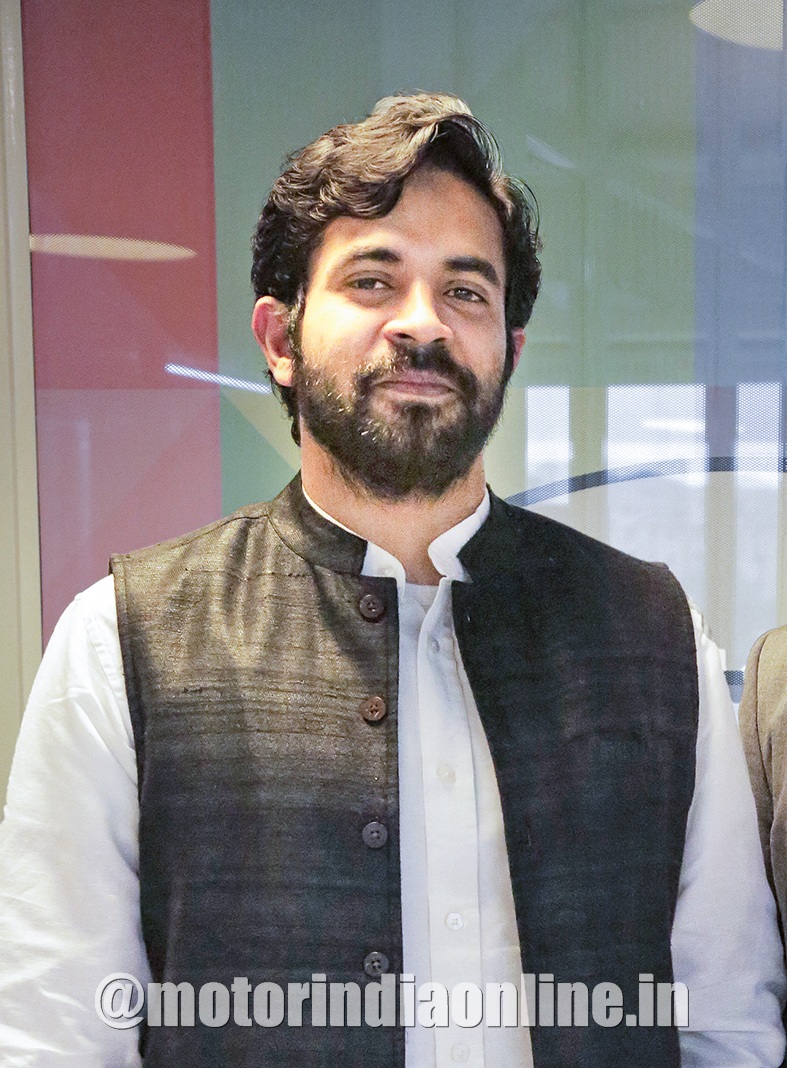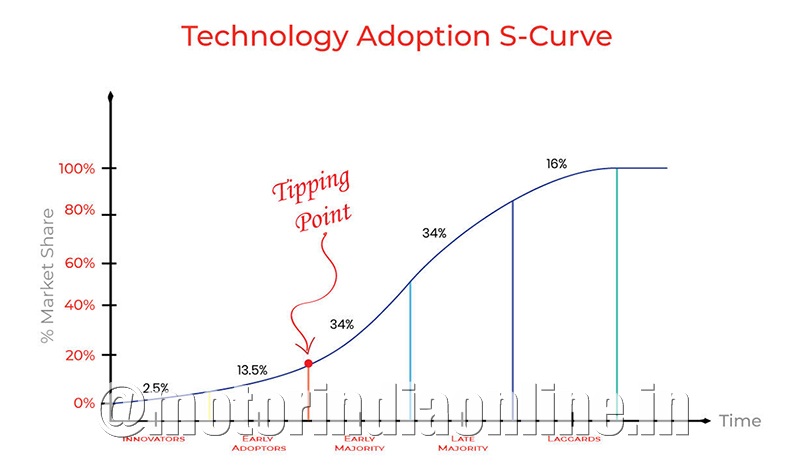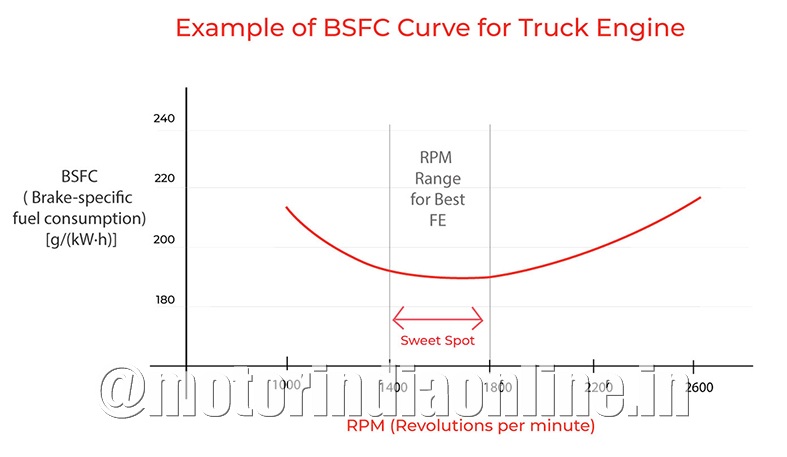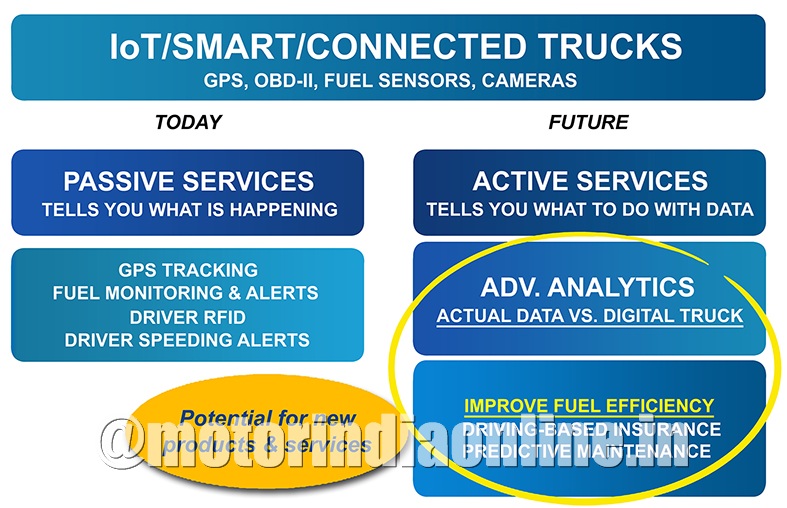By Pradeep Pandurangi, Director, AeroTruck
Every new technology follows an S-curve for adoption. It starts with innovators and risk-takers who experiment and break new ground. They are followed by the early adopters who give valuable feedback that improves the technology as users grow in number. And then comes the tipping point, where the majority adopts the technology and it becomes mainstream. Are we witnessing such a tipping point for commercial vehicle telematics? How much of the smart/IoT/connected vehicles discussion that goes on in industry conferences is actually being implemented on the ground, and finally what is driving the change?

We are at a point with vehicle telematics in India where the technology has become a standard for large fleet operators and the wave of technology-focused truck owners.
Majority of supply chain departments of MNCs demand visibility of vehicles from the transporters, thus creating a strong incentive to add tracking devices in order to stay in business.
The latest push for telematics over the past couple of years has been from the smartphone-enabled truck aggregators pushing CV telematics into the mainstream.
More than just tracking
From our experience, we see that telematics is now making the leap from just tracking services to helping the fleet owners to make decisions regarding truck buying, managing fuel expenses and training drivers, among other things.
So we see a transition from passive telematics services such as tracking and alerts that only spewed out data, to active or value-added services, where the data is combined with analytics to improve the efficiency of operations, the vehicle efficiency and the possibility to guide the driving behaviour. There are a host of possible value-added services such as predictive maintenance and usage-based insurance. However, since I have been focused on efficiency improvements, we will explore further within that domain.
Using telematics to improve fuel efficiency
Every truck owner wants to reduce operating costs and the highest percentage of that cost is the fuel expenses. There are two possible strategies to follow for improving fuel efficiency. One is to make the vehicle more fuel efficient and the second is to incentivize the driver to drive in a more fuel-efficient manner.
When the vehicle is modified to give a better mileage, then, irrespective of the driving behavior, the truck owner saves fuel. At my company we are working on one such technology – truck aerodynamics. We launched our product AeroTruck™ focusing on the express trucking vertical, and especially long-haul e-commerce trucking where the average speeds are higher and mileage covered is 15,000 to 20,000 km/month. By making the truck design more aerodynamic, the air resistance of highway-going trucks is reduced, thus saving fuel. At speeds of 50 km/hr and above, aerodynamics starts becoming an important factor for fuel consumption.
We spent a lot of resources to prove the on-road fuel savings to our customers and used extensive telematics data, including GPS and fuel sensors. Our success in convincing customers based on the actual road data is a testament to the power of telematics to sell an innovative product in the market. A similar approach could be adopted by tire manufacturers to sell low rolling resistance tires or lightweight materials for truck bodies. Basically any innovation that helps increase fuel efficiency can now be proven in a cost-effective way.
Technology vs. human aspects
Now comes the interesting part. When we showed the data to our customers, they also wanted to know the driver performance, apart from the vehicle efficiency improvement. And using the telematics data, we can indeed benchmark drivers on their performance. There is a technological aspect to this, which pertains to selecting the right parameters for performance benchmarking; and a human aspect, that is of the truck owner-driver relationship changing as a result of increased transparency.
On the technology front, we can be objective and quantify the driver performance in numbers. Each combustion engine has an RPM range where it works most efficiently. Hence, if the driver keeps the engine in the correct RPM range, he is said to be driving in the “sweet-spot”. Telematics devices can easily have access to this data and rate driver performances based on sweet-spot driving combined with other variables like engine idling time, harsh braking, safety, etc.
Coming to the human aspect – when the truck owners can see the precise fuel being consumed via fuel sensors, they would no longer like to settle for a “fixed fuel” rate for each route with the drivers (as is the current custom for most truck owners). In our everyday life, we are seeing how technology is impacting human relationships, and a classic case study can be found in the Indian truck transportation industry where telematics is causing a renegotiation of an age-old relationship.
Views from a progressive fleet owner
I have had in-depth discussions on these aspects with Mr. Ramratan Singhi, the owner of SURE Cargo Control Pvt. Ltd. We worked closely with him to fit their entire truck fleet with aerodynamic devices and in the process learnt about the intricacies of the logistics business in India. During the testing phase, he focused not only on the robustness of data being gathered (double and triple checking with other devices) but also devised a strategy to get buy-in from the drivers.
“The primary fear of the drivers is that the fuel tracking devices will somehow lower their earnings. Once they are convinced that this is not the case, they will be more open to new technology and we can build incentives for them to drive more efficiently”, says Mr. Singhi.
After the success of the aerokit, he is now looking towards tire pressure monitoring and light-weighting to reduce fuel costs further. There will always be resistance to change from the stakeholders – internal and external, but today we have the tools. Mr. Singhi has put the tools to use in the right way. We can now see more and more fleet owners thinking in this way and changing the dynamics of the industry.
Finding the sweet-spot
Clearly it is more difficult to find the sweet-spot for the human aspects and incentive structures than technological ones. However, robustness and reliability of latest sensors on the market has improved the quality of the telematics data, which in turn builds trust between different stakeholders. So, it is our belief that in the next few years, the mainstreaming of CV telematics will provide a major boost to the growth of the logistics industry in India and underpin the introduction of further innovations in this sector.


